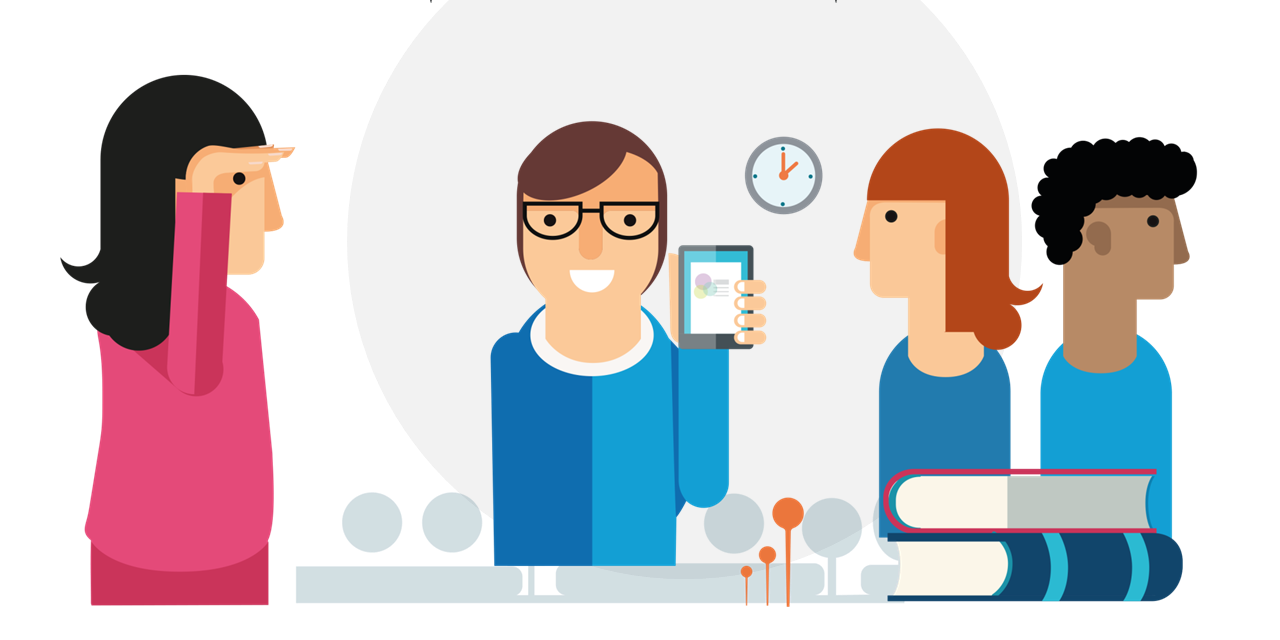
What is SELFIE about?
Self-reflection
Are schools exploiting the opportunities digital technologies offer? Can they transform digital technologies into better teaching and learning? To help school communities to understand where they stand in their use of digital technologies, the European Commission has developed, in collaboration with an international team of experts, an online easy-to-use self-reflection tool for schools in Europe: SELFIE: Self-reflection on Effective Learning by Fostering Innovation through Educational Technologies.
Improvement opportunities
SELFIE asks questions to school leaders, teachers and students and based on this feedback it provides a picture, that is a SELFIE: a snapshot of school‘s strengths and weaknesses in their use of digital technologies for learning. You can see where your school is, and, from there, decide what you want to improve, and build your own strategy.
What are the key premises of SELFIE?
Learning
SELFIE focuses on learning rather than technology. As such, it considers all dimensions: school strategies, teaching, learning and assessment practices, infrastructure, curricula, student experience…
Community
It involves all key actors in the learning process: school leaders, teachers and, of course, students. A ´digitally-capable school´ that promotes digital-age learning follows both top-down and bottom-up innovation and it is responsive and supportive of the development of its members. That’s why SELFIE involves the whole school community.
Progress
The focus is on progress so SELFIE can be used by any school, not only the ones that are digital ‘champions’ or highly innovative.
Confidentiality
All data is anonymous and cannot be tracked to individual schools, students or teachers.
How does it work?
Customisation
Obviously schools are not all the same. That is why SELFIE allows customisation! Each school can select and even add its own questions to the tool to suit its own objectives.
Segmentation
School leaders, teachers and students provide their input through the customised questionnaires.
Synthesis report
The system synthesises the input provided and generates the SELFIE School Report, a snapshot where strengths, weaknesses and areas for improvement are presented in a graphic way.
Like in a real selfie, the more the participants in SELFIE, the more clear and accurate the SELFIE’ of their school will be!
The SELFIE School Report can then be used for a dialogue within the school community, to create an action plan to improve the use of digital technologies for better learning and for year on year comparison.
How is SELFIE developed and by whom?
Conceptual framework
SELFIE is based on the Digitally-Competent Educational Organisations (DigCompOrg) conceptual framework. A fine-grained description of what it takes to educational organisations to be digitally capable.
Pan-European
SELFIE is being developed by the European Commission, together with a panel of experts from across Europe.
User-centered
For the design of the tool, SELFIE team received input from more than 5000 school leaders, teachers and students in January 2017.
More than 67000 school leaders, teachers and students from 650 schools in 14 countries tested SELFIE’s beta version in early October 2017.
Next phase in 2018
The analysis of the data from the pilot implementation of SELFIE supports the fine-tuning and the development of the next version of SELFIE, expected for 2018.
Interested in learning more about SELFIE?
Source: Self-reflection tool for digitally capable schools (SELFIE) – European Commission






